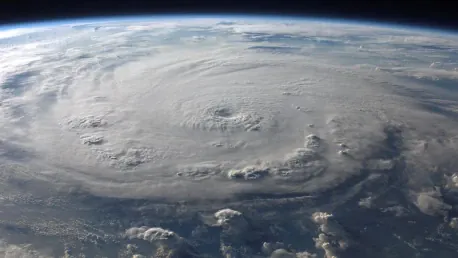Facing the combined devastation from Hurricanes Helene and Milton, federal relief agencies find themselves in a precarious financial situation. Initially, FEMA appears to have sufficient funds to manage the immediate aftermath of Hurricane Milton, a Category 3 storm that has battered Florida with relentless tornadoes and extensive damage. Yet, as areas still grappling with the effects of Hurricane Helene brace for additional challenges, uncertainty looms over the longevity of disaster relief programs. This situation has generated considerable concern among residents and officials alike, who understand the complex nature of effectively managing such large-scale disasters.
Adding to the financial strain is the Small Business Administration’s (SBA) disaster loan program, which faces a critical shortfall. With only a few weeks’ worth of funding left, the program’s ability to support small businesses and individual homeowners teeters on the brink of collapse. This is particularly troubling, given that small businesses are often the economic backbone of communities hit by natural disasters. As a result, the SBA has been vocal about the urgent need for additional financial resources to sustain its loan program throughout the hurricane season. These funding issues shine a light on broader concerns regarding the adequacy of national disaster preparedness and the financial resilience of federal relief systems.
Immediate Relief Actions
Hurricane Milton’s wrath underscores the need for immediate and robust relief actions to mitigate further damage and provide necessary support to impacted communities. FEMA’s current funding seems poised to handle initial recovery efforts, but lingering questions about longer-term projects remain unanswered. Tornadoes spawned by Hurricane Milton have left swathes of destruction, compelling many residents to evacuate, although some have expressed hesitancy due to previous experiences. The enormity of coordinating such a large-scale evacuation effort, alongside providing emergency shelters and medical support, adds layers of complexity to an already challenging scenario.
Compounding the situation are the extended recovery needs of areas still struggling to rebound from Hurricane Helene. Communities in these regions are already stretched thin, and the arrival of another powerful storm exacerbates their plight. Despite FEMA’s assurances, the agency’s capacity to maintain long-term support remains uncertain without an emergency influx of funds. This gap amplifies the necessity for a comprehensive review of disaster management protocols and the implementation of robust financial safeguards to ensure continuous support for disaster-stricken areas. Without these measures, both FEMA and the SBA may find themselves ill-equipped to address future emergencies effectively.
Long-Term Financial Resilience
Federal relief agencies are grappling with severe financial pressure in the wake of Hurricanes Helene and Milton. Initially, FEMA appeared to have enough resources to address the immediate aftermath of Hurricane Milton, a Category 3 storm that inflicted significant tornado damage across Florida. However, areas still suffering from Hurricane Helene’s impact now face added uncertainty about ongoing disaster relief. This situation has sparked worry among residents and officials, who recognize the complexities of managing such extensive disasters.
The Small Business Administration’s (SBA) disaster loan program is also under dire financial strain, with funding projected to last only a few more weeks. This shortfall threatens the support available to small businesses and homeowners, who are essential to the recovery and economic stability of communities ravaged by natural disasters. The SBA has stressed the urgent need for more financial resources to maintain its loan program throughout the hurricane season. These funding challenges highlight broader issues about the nation’s disaster preparedness and the financial resilience of federal relief systems.









